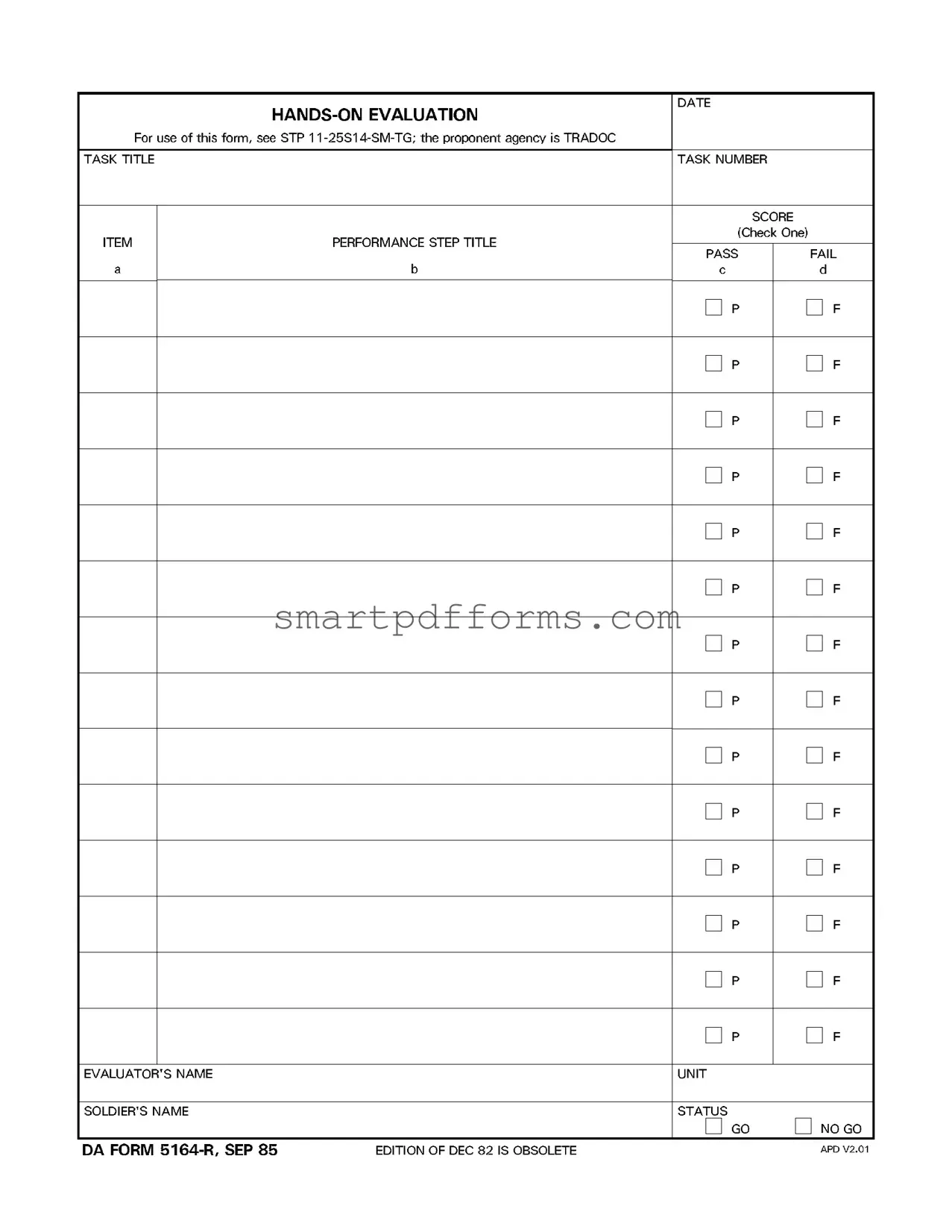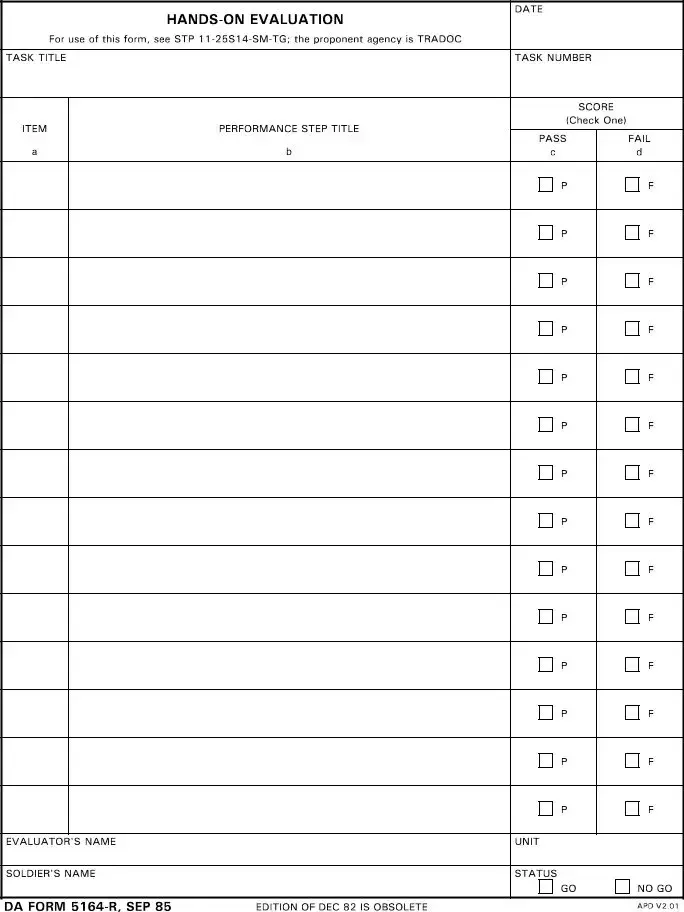Blank 5164 R PDF Template
The DA Form 5164-R, also known as the Hands-On Evaluation form, is a crucial document utilized by the United States Army. It is used for assessing a soldier's performance in specific tasks, noting items like the task title, date, task number, and the individual's performance as either 'Pass' or 'Fail'. Whether you're an evaluator looking to accurately record a soldier's abilities or a service member aiming to understand your assessments, ensuring this form is filled out thoroughly and correctly is essential. To get started on filling out the DA Form 5164-R, click the button below.
Make This Document Now

